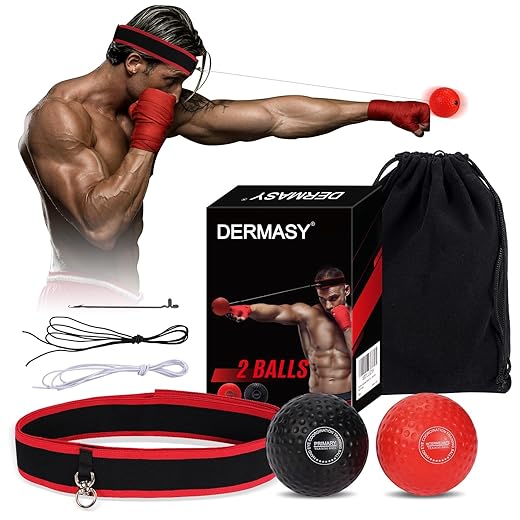







Understanding the Basics of Safe Reflex Ball Training
Before diving into specific prevention techniques, it’s crucial to understand that reflex ball training requires proper progression and patience. Most facial impacts occur due to rushing through the learning process or improper technique.
1. Master the Correct Starting Position
Proper Stance
- Keep your feet shoulder-width apart
- Bend your knees slightly
- Position your hands in a protective guard stance
- Maintain an arm’s length distance from the ball
Head Position
- Keep your chin slightly tucked
- Maintain eye contact with the ball at all times
- Position the ball at forehead level, not directly in front of your face
2. Practice Proper Progressive Training
Beginner Steps
- Start with static ball control
- Practice slow bounces without moving
- Master single punches before combinations
- Begin with larger, softer balls before progressing to smaller ones
Speed Control
- Start at 25% speed
- Only increase speed when you can maintain control
- Focus on accuracy before speed
3. Implement Safety Techniques
Defensive Movements
- Keep your hands up in a protective position
- Learn to dodge and weave
- Practice stepping back when losing control
- Develop peripheral awareness
Emergency Responses
- Master the “catch and stop” technique
- Learn how to deflect the ball safely
- Practice emergency blocking movements
4. Use Appropriate Equipment
Recommended Gear
- Start with softer training balls
- Wear protective eyewear
- Use proper length string/elastic
- Select appropriate ball size for your skill level
Equipment Maintenance
- Check elastic tension regularly
- Inspect ball attachment points
- Replace worn equipment promptly
5. Common Mistakes to Avoid
Training Errors
- Rushing progression
- Training when fatigued
- Ignoring proper form
- Skipping warm-up exercises
Technical Mistakes
- Standing too close to the ball
- Dropping guard hands
- Looking away from the ball
- Using excessive force
6. Recovery Techniques
If you do get hit, knowing how to react is important:
Immediate Actions
- Stop training immediately
- Apply ice if needed
- Check for serious injury
- Take adequate rest before resuming
Advanced Training Tips
Once you’ve mastered the basics:
Skill Development
- Practice rhythm and timing
- Work on combination moves
- Incorporate footwork
- Add defensive movements
Control Exercises
- Single-hand drills
- Slow-motion practice
- Distance control training
- Pattern recognition
Conclusion
Preventing facial impacts during reflex ball training comes down to proper technique, appropriate progression, and consistent practice. Remember that safety should always be your primary concern, and there’s no shame in taking things slow.
FAQ
Q: How long should I practice before increasing speed?
A: Spend at least 1-2 weeks mastering each speed level before increasing. You should be able to maintain control for 5 minutes without mistakes.
Q: Should beginners wear protective gear?
A: Yes, protective eyewear is recommended for all skill levels, and beginners might also benefit from using a light face shield until proper control is developed.
Q: What’s the safest ball size to start with?
A: Begin with a larger, softer ball (around 63mm) as it moves more slowly and is easier to track and control compared to smaller sizes.
